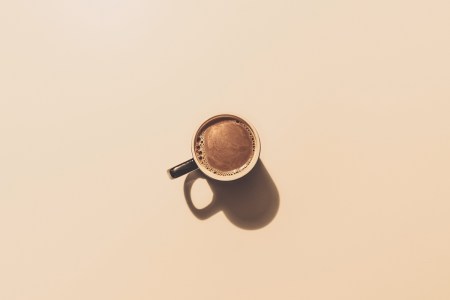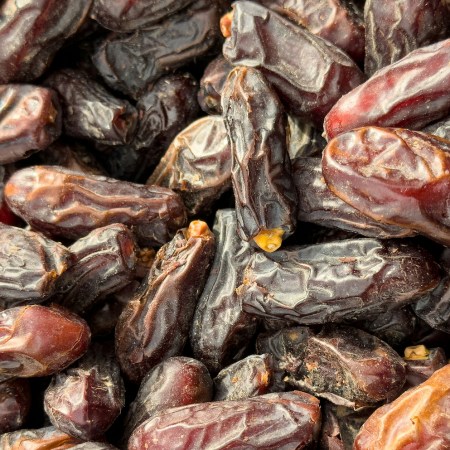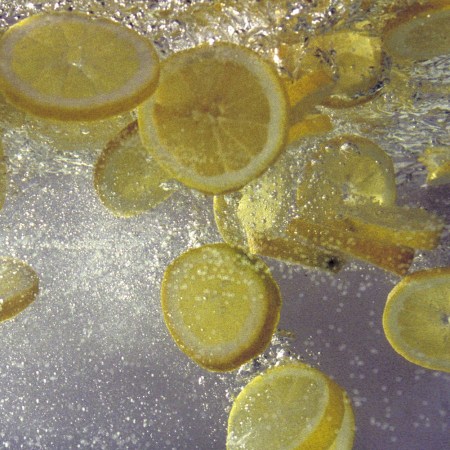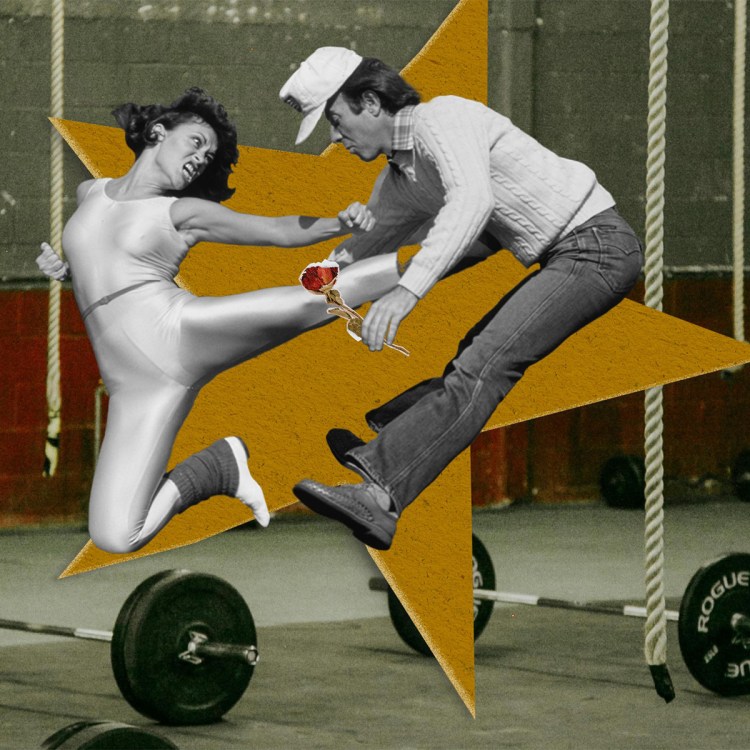“All I knew about water was that my grandmother said I was mad to buy it in bottles because it’s no different from what comes out of the tap for free,” laughs Doran Binder, founder of Crag Spring Water. He draws his water from a borehole that he accidentally acquired when he bought a pub in northwest England. “But now I think I’m part of a wider awareness that’s growing around water, around how waters can be so different and how we’ve all been scammed for so many years,” he adds.
Binder can get pretty heated about this. Not just the environmental impact of all that single-use plastic (recyclable/re-useable glass is way more environmentally efficient, unsurprisingly), but the fact that so many cheap bottled waters, sold at huge volumes from convenience stores around the world, is just tap water bought from municipalities that’s filtered, treated, packaged and sold back to the public at a huge markup. And we drink a lot of it — per capita consumption of bottled water reached an all-time high during the pandemic and is predicted to just keep climbing.
“That’s a problem, not the least because it means many people tend to put all waters — including incredible natural spring and mineral waters — in the same basket,” Binder says. “Why are many of us keen to choose organic food but not organic water? Waters are not all the same. They taste as different as wines.”
Rise of the “Water Sommelier”
The analogy is apt because Binder is also one of a growing breed of so-called water sommeliers; some are based within upscale restaurants and hotels, while others provide training to more traditional wine sommeliers so they can better guide their guests. Expect to find a “water menu” at the likes of Park Hyatt Shanghai and the Grand Hotel Bad Ragaz in Switzerland.
Water experts may ask: Does your taste lean more to a water with low salinity? Or maybe with high minerality? If distilled water has a zero rating for TDS (or Total Dissolved Solids), a natural water might be rated at anything up to 30,000 parts per million. How about a water with a naturally high oxygen content or notably fine bubbles for extra mouthfeel? A high level of calcium will give water a creamy richness, a high level of silica will give a smoothness.
“I know people are skeptical about natural waters,” Binder says. “But I think that’s because they’ve been told there’s nothing even to consider — it’s all just water — so they don’t think about it. Certainly natural water is better for you than tap water, though no single natural water is better for you than any other. But at tastings, people tend to be blown away by how unique waters can be. This is a market that’s gaining momentum.”
Is TikTok’s “Proffee” Nutrition Trend Actually Legit?
What you need to know about the platform’s latest obsessionThe Terroir of Water
There has, argues Michael Mascha, been an attitudinal shift in recent years. He’s a water sommelier, a founder of FineWaters, the Fine Water Academy — a training organization on natural waters — and the Taste & Design Awards, one of the growing number of Oscar-style ceremonies for waters from around the world, with the next event set for Spain in April.
Mascha says that a couple decades ago, the conversations he had about water “were all about trying to catch me out.” The backlash against bottled waters — for the packaging and transportation’s environmental impact — only seemed to underscore for many the notion that there was something dubious about all bottled waters. But now, he says, there’s a much wider acceptance that water has terroir, in a similar way to how wine buffs can connect a product’s taste with a certain parcel of land and the stewardship of that land. He suggests to look for the origin information on the label, then look for mineral content (generally, the longer the water has been in-ground, the higher the content), pH level (the higher it is, the more acidic and sour the water) and carbonation. All play a part in determining a water’s particular taste.
“Natural waters taste differently because they start from the same cycle, as rain, but then go into the ground where they absorb different minerals and develop different characteristics — you can have a similar experience enjoying those differences as you might with a selection of wines,” Mascha says. “And especially with more people not drinking alcohol anymore, it’s mad to go to a restaurant and be offered the same water you can get from a gas station across the road.”
An Artisanal Water Awakening
Timo Bausch, a water sommelier who last year established his Sommcademy business to train people in the fine dining world, argues we should be seeing more natural water paired with food, coffee and wine. For example, he says red wine works better with a still water because carbonation tends to increase bitterness, whereas light carbonation will underscore the flavors of a white wine. A water high in calcium will have a distinctive saltiness to it that can cut through sweetness, and the opposite is true of a water high in magnesium.
None of this is really such a hard idea to grasp. After all, once-expensive products have become commodities (the likes of of sugar, tobacco, spices, tea), while certain staples have undergone a process of artisanal reappraisal (wine, olive oil, salt, chocolate, bread and so on). So why not water?
“We all know from experience that different waters do taste differently,” says Jamal Quereshi, the founder of Svalbardi water. “If you pay attention, even municipal water doesn’t all taste the same, depending on how it’s been processed, on whether, for example, you live in a soft or hard water area [hard water can also be high in minerals]. The fact is, if you sit down with someone, one-to-one, to try various waters, it’s incredibly easy to convert people to understanding their different qualities.”
That said, standing out in a market increasingly crowded with premium waters is not so easy. Building a bottled artisanal water company is a huge challenge, despite the idea that (like oil) your product just has to be drawn out of the ground. Mascha compares the best of the natural waters to a product provided by local farmers attuned to the earth, to seasonality. Volume waters, on the other hand, are pumped out (literally and figuratively) by agri-business giants who are happy to over-extend aquifers for profit.
For the former, “it’s more a labor of love,” he says, given the complexities of drawing some water from often remote locations and getting it to market, this being the key influence on price. “They’re not going to get rich by it, especially given that even special waters might cost between $8 and $12 a bottle, which makes it still a very affordable luxury,” he adds.
$100 Iceberg Water
“I had to learn everything from glaciology to plumbing to how the luxury market in China works,” Quereshi says. Distribution is currently dormant, but the water won a certain notoriety for driving the super-premium market. In fact, a 750ml bottle of this artisanal water — drawn from century-old icebergs off the coast of northern Norway using a specially-devised machine — would set you back upwards of $100.
“At the very premium end of the water market, it’s very hard to stand out,” Quereshi says. “To most consumers, water is still just water, and it’s true that a lot of waters do taste much the same. These [high-end] waters are mostly created by very small companies that don’t have big marketing budgets, so you need to be able to get across, in an understandable way, why your water tastes different — and that’s not easy online. You can’t just make claims to be the purest and stick a picture of a mountain on your label. It’s a slow process of education that’s going on, especially in the U.S. and Asian markets, so there’s still a lot of room in the fine water space. Europe is already comfortable with the idea of waters being different, though.”
Will the States Catch On?
Europe has a very long tradition of an appreciation for natural waters, albeit one that seems to have drifted in and out of public consciousness in line with a varying focus on health. Bausch’s Sommcademy is based near Frankfurt, Germany, and he notes the country already has some 500 different waters commercially available. Natural water was so important in antiquity that the Roman Empire established entire cities around springs; while, in the late 18th century, natural water was rediscovered for its health benefits, giving it a fashionability among the well-to-do. Today, given our obsession with wellness, with provenance, with premiumization and the experience economy, natural water is making a big splash again. There’s a confluence of interests.
“I think more people are linking the health benefits and the taste of water — they flow together, as it were, because if you like the taste of something, you consume more of it,” Bausch says. He notes that waters’ different mineral properties can have proven — if often slight — medicinal advantages for certain conditions like heartburn, constipation and muscle cramps (but ideally should not be given to children).
“I think that’s also driving understanding of the difference between tap and natural water,” Bausch adds. “Tap is perfectly safe [in most places around the world it has to meet stringent safety criteria] and is absolutely fine for hydration. That’s even if it’s often highly-treated to remove pesticides, traces of antibiotics and so on, which also tends to remove any minerality. There’s potential contamination from the pipelines it comes through, too. I live in a house built in 1870, and don’t want to know what the inside of the water pipes looks like. But, more than that, most of it just doesn’t taste of anything much. It doesn’t offer you any kind of experience.”
And that’s the real takeaway here. As Marion Nestle, professor of nutrition at New York University notes, bottled value water is certainly convenient, but that’s about its only merit. It is, especially if you filter your tap water, otherwise a bit of a con. But the swanky stuff, the natural product, pulled from springs, glaciers, ancient aquifers and even icebergs? That isn’t as pretentious as you may have supposed. It has its own flavor and texture if you let your palate rediscover them occasionally. The next time you’re offered just still or sparkling, ask your server to go into a little more detail.
The Charge will help you move better, think clearer and stay in the game longer. Subscribe to our wellness newsletter today.

























